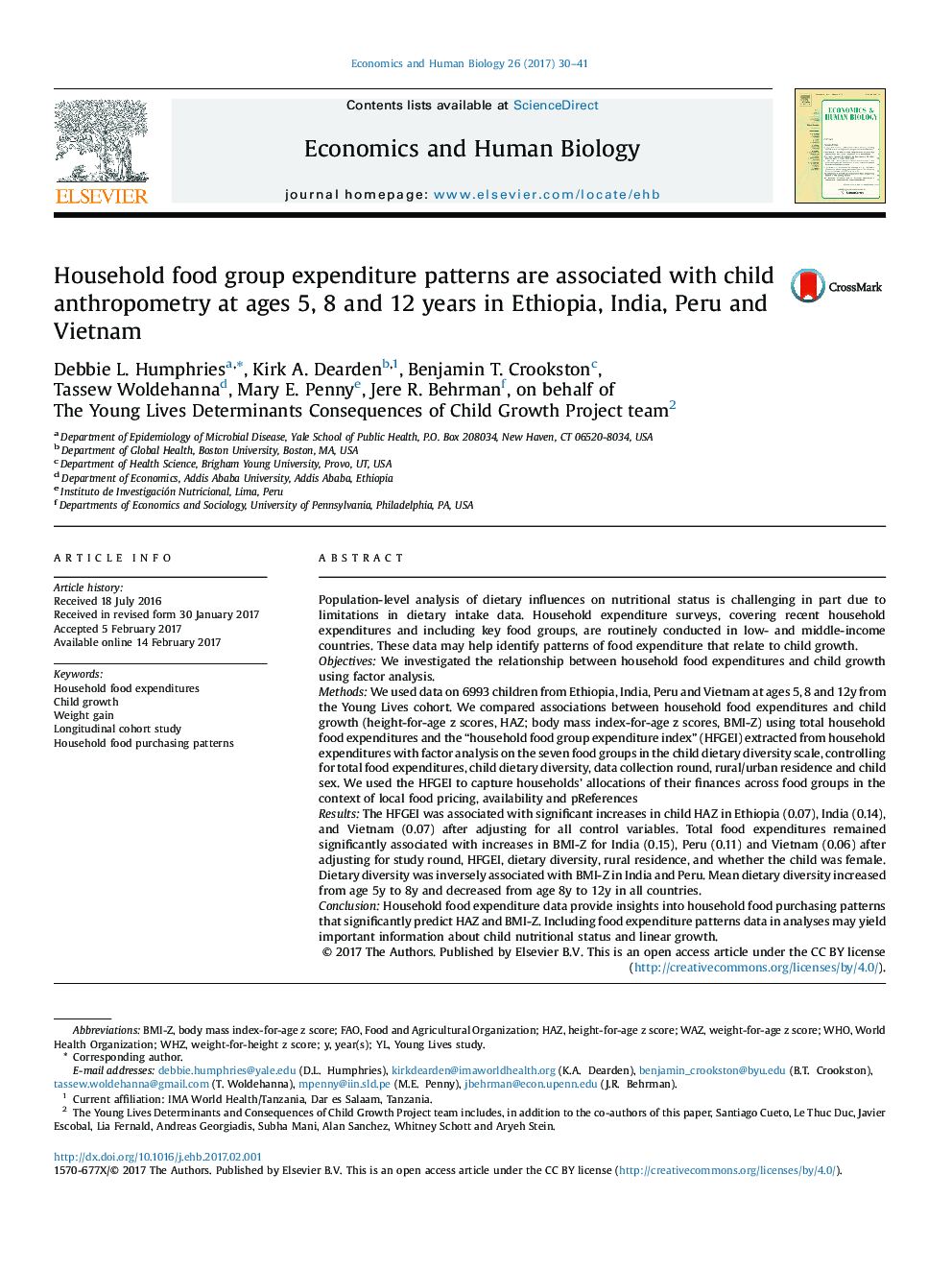| کد مقاله | کد نشریه | سال انتشار | مقاله انگلیسی | نسخه تمام متن |
|---|---|---|---|---|
| 5056805 | 1476553 | 2017 | 12 صفحه PDF | دانلود رایگان |
- Exploratory factor analysis identifies a single factor from household food expenditure data.
- We have called this factor the household food group expenditure index.
- Household food group expenditure patterns are associated with significant increases in child HAZ.
Population-level analysis of dietary influences on nutritional status is challenging in part due to limitations in dietary intake data. Household expenditure surveys, covering recent household expenditures and including key food groups, are routinely conducted in low- and middle-income countries. These data may help identify patterns of food expenditure that relate to child growth.ObjectivesWe investigated the relationship between household food expenditures and child growth using factor analysis.MethodsWe used data on 6993 children from Ethiopia, India, Peru and Vietnam at ages 5, 8 and 12y from the Young Lives cohort. We compared associations between household food expenditures and child growth (height-for-age z scores, HAZ; body mass index-for-age z scores, BMI-Z) using total household food expenditures and the “household food group expenditure index” (HFGEI) extracted from household expenditures with factor analysis on the seven food groups in the child dietary diversity scale, controlling for total food expenditures, child dietary diversity, data collection round, rural/urban residence and child sex. We used the HFGEI to capture households' allocations of their finances across food groups in the context of local food pricing, availability and pReferencesResultsThe HFGEI was associated with significant increases in child HAZ in Ethiopia (0.07), India (0.14), and Vietnam (0.07) after adjusting for all control variables. Total food expenditures remained significantly associated with increases in BMI-Z for India (0.15), Peru (0.11) and Vietnam (0.06) after adjusting for study round, HFGEI, dietary diversity, rural residence, and whether the child was female. Dietary diversity was inversely associated with BMI-Z in India and Peru. Mean dietary diversity increased from age 5y to 8y and decreased from age 8y to 12y in all countries.ConclusionHousehold food expenditure data provide insights into household food purchasing patterns that significantly predict HAZ and BMI-Z. Including food expenditure patterns data in analyses may yield important information about child nutritional status and linear growth.
Journal: Economics & Human Biology - Volume 26, August 2017, Pages 30-41
